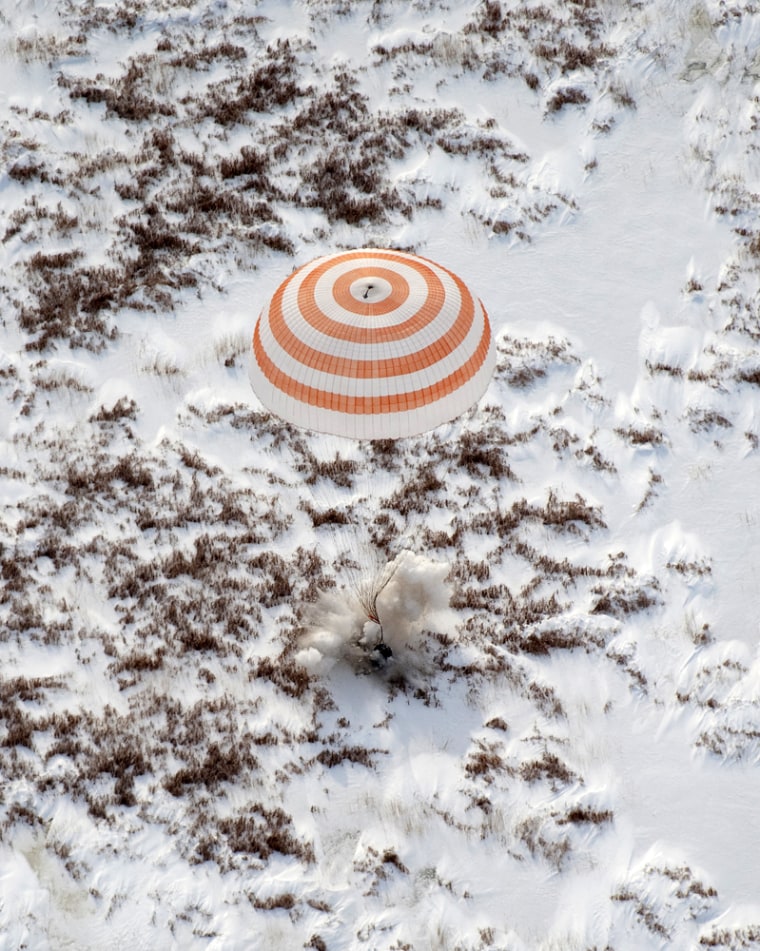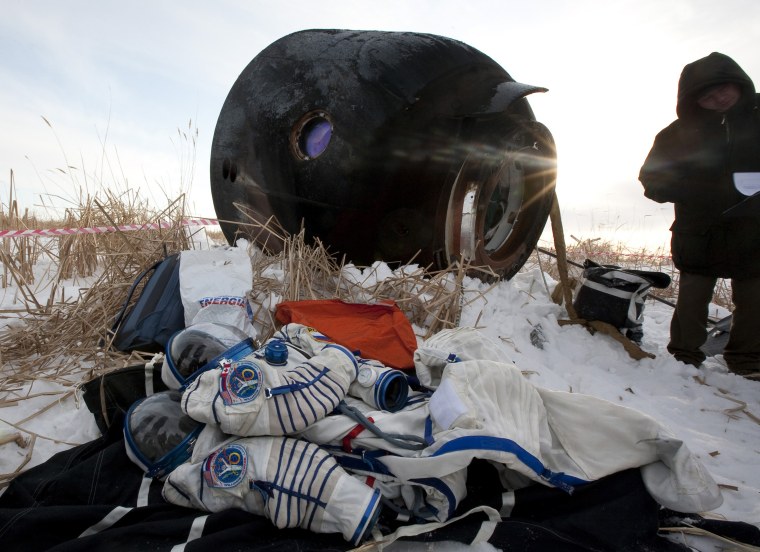Astronauts from the United States and Russia landed safely in northern Kazakhstan's chilly steppes on Thursday after spending almost six months on the International Space Station.
The Russian Soyuz TMA-16 capsule carrying NASA astronaut Jeff Williams and Russian Maxim Surayev touched down gently and was then rolled onto its side by brisk winds near the town of Arkalyk.
Several Russian Mi-8 helicopters, which had hovered in a circle above the landing zone ahead of touchdown, immediately reached the capsule with the astronauts strapped inside.
After landing, Williams and Surayev were quickly pulled out of the capsule and taken by stretcher to a hastily erected tent, where they were examined by Russian and U.S. space agencies medical staff.
Speaking from the landing site, NASA public affairs officer Josh Byerly said the astronauts appeared to be in good shape after spending 167 days at the space station and returning to Earth. "Both Max and Jeff are doing extremely well — they both gave the ground team here a thumbs up," Byerly said.
Williams and Surayev were to be flown to Moscow later Thursday and then taken to the Russian cosmonaut training center near the capital.
Temperatures at the landing site hovered around minus 6 degrees Celsius (20 degrees Fahrenheit). Byerly said the movement of rugged all-terrain vehicles bearing space officials was impeded by tall banks of snow.
The astronauts spent about five and a half months on the International Space Station.
The duo blasted off to the space station Sept. 30 together with Cirque du Soleil founder Guy Laliberte, who became the seventh paying space tourist to travel to the station. Laliberte returned to earth 10 days later.

On Wednesday, Williams handed over command of the space station to Russia's Igor Kotov, who will remain aboard until June along with NASA astronaut Timothy J. Creamer and Soichi Noguchi of Japan. They are to be joined early next month by NASA's Tracy Caldwell Dyson and Russians Alexander Skvortsov and Mikhail Kornienko.
At the space station, Noguchi updated his Twitter account upon hearing news of the touchdown with the words: "Soyuz TMA-16 successfully landed!"
The first space station crew arrived in 2000, two years after the first part was launched.
Reliance on the Soyuz spacecraft is expected to increase over the next few years, with only four launches left for the space shuttle fleet before it is retired. That will leave NASA without its own means to send astronauts into space for the first time in half a century. NASA hopes that U.S. commercial space vehicles will help fill the gap.
